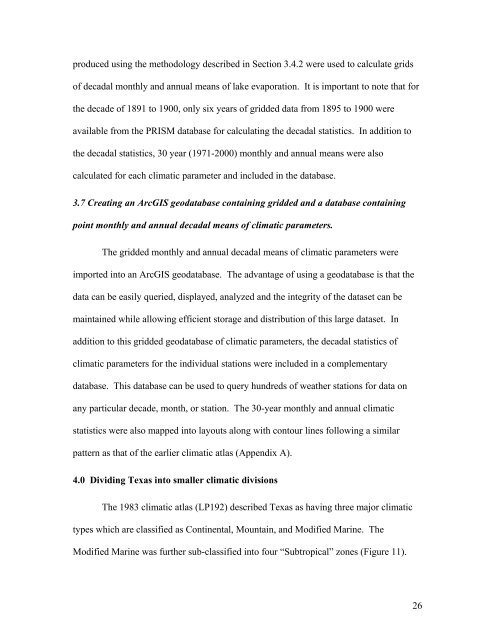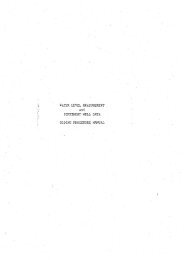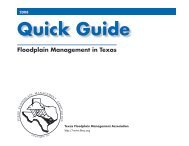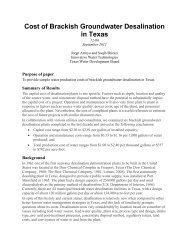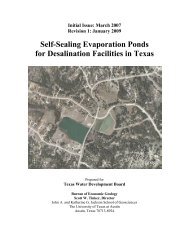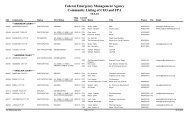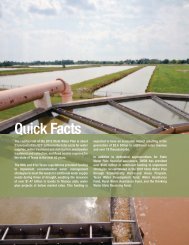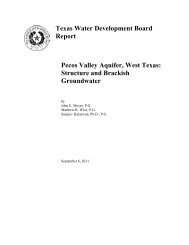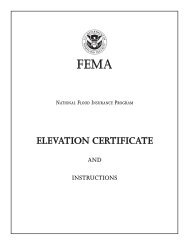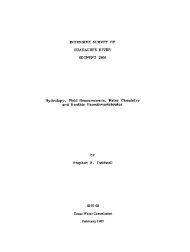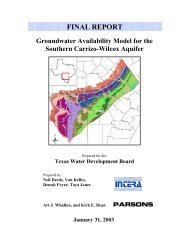Digital Climatic Atlas of Texas - Texas Water Development Board
Digital Climatic Atlas of Texas - Texas Water Development Board
Digital Climatic Atlas of Texas - Texas Water Development Board
You also want an ePaper? Increase the reach of your titles
YUMPU automatically turns print PDFs into web optimized ePapers that Google loves.
produced using the methodology described in Section 3.4.2 were used to calculate grids<br />
<strong>of</strong> decadal monthly and annual means <strong>of</strong> lake evaporation. It is important to note that for<br />
the decade <strong>of</strong> 1891 to 1900, only six years <strong>of</strong> gridded data from 1895 to 1900 were<br />
available from the PRISM database for calculating the decadal statistics. In addition to<br />
the decadal statistics, 30 year (1971-2000) monthly and annual means were also<br />
calculated for each climatic parameter and included in the database.<br />
3.7 Creating an ArcGIS geodatabase containing gridded and a database containing<br />
point monthly and annual decadal means <strong>of</strong> climatic parameters.<br />
The gridded monthly and annual decadal means <strong>of</strong> climatic parameters were<br />
imported into an ArcGIS geodatabase. The advantage <strong>of</strong> using a geodatabase is that the<br />
data can be easily queried, displayed, analyzed and the integrity <strong>of</strong> the dataset can be<br />
maintained while allowing efficient storage and distribution <strong>of</strong> this large dataset. In<br />
addition to this gridded geodatabase <strong>of</strong> climatic parameters, the decadal statistics <strong>of</strong><br />
climatic parameters for the individual stations were included in a complementary<br />
database. This database can be used to query hundreds <strong>of</strong> weather stations for data on<br />
any particular decade, month, or station. The 30-year monthly and annual climatic<br />
statistics were also mapped into layouts along with contour lines following a similar<br />
pattern as that <strong>of</strong> the earlier climatic atlas (Appendix A).<br />
4.0 Dividing <strong>Texas</strong> into smaller climatic divisions<br />
The 1983 climatic atlas (LP192) described <strong>Texas</strong> as having three major climatic<br />
types which are classified as Continental, Mountain, and Modified Marine. The<br />
Modified Marine was further sub-classified into four “Subtropical” zones (Figure 11).<br />
26


